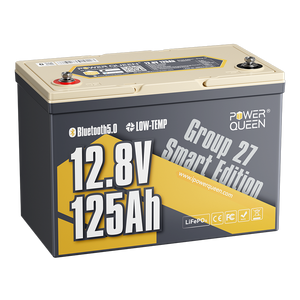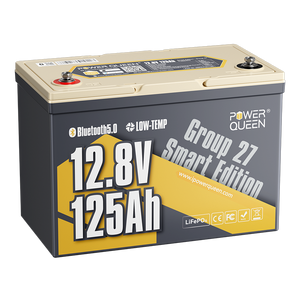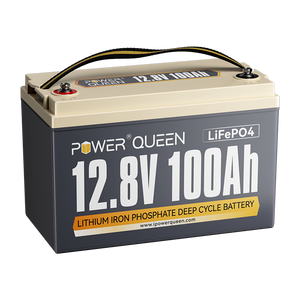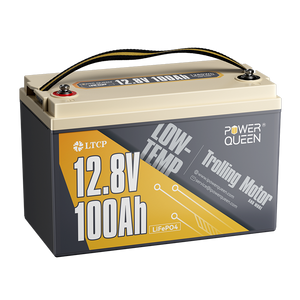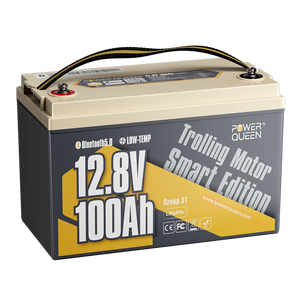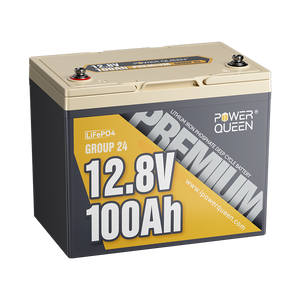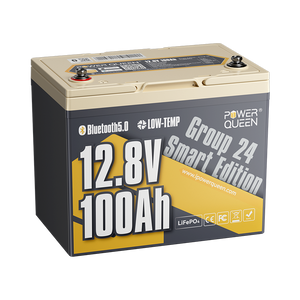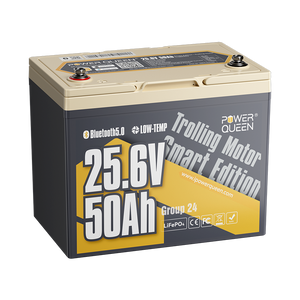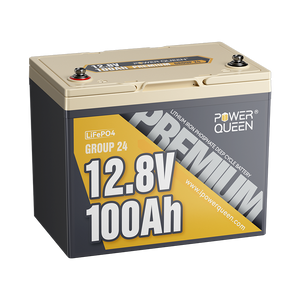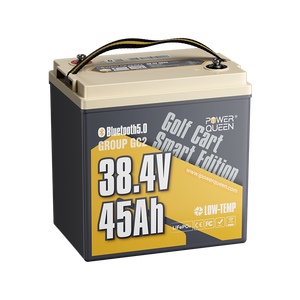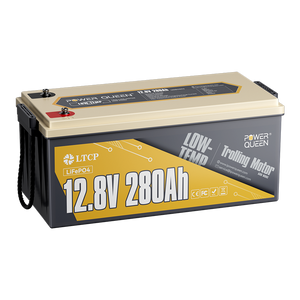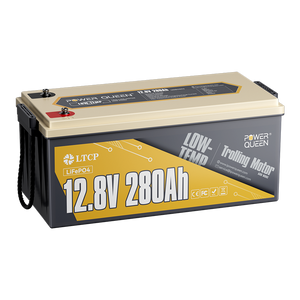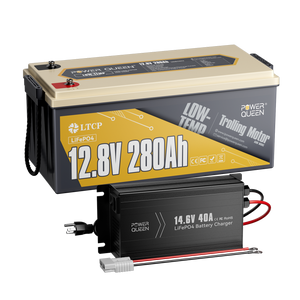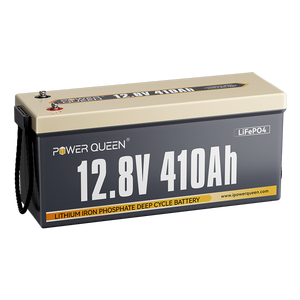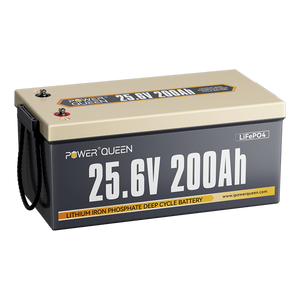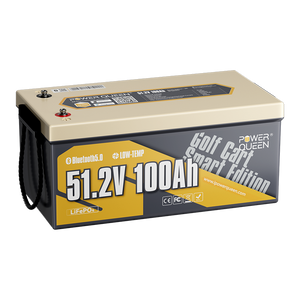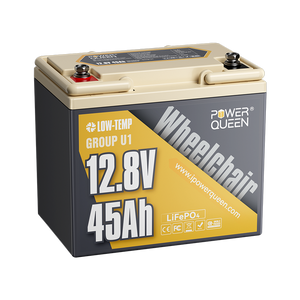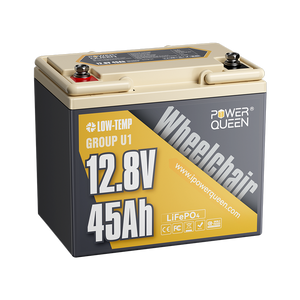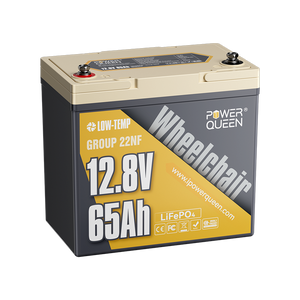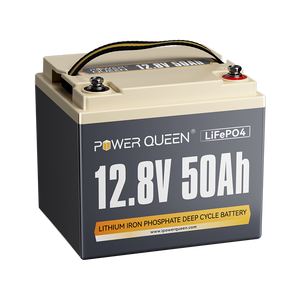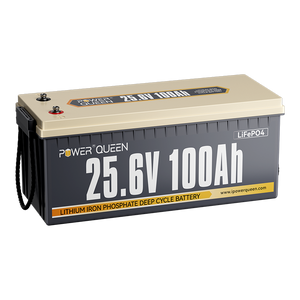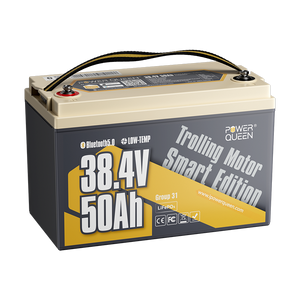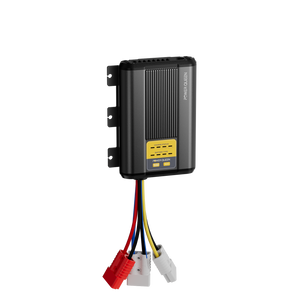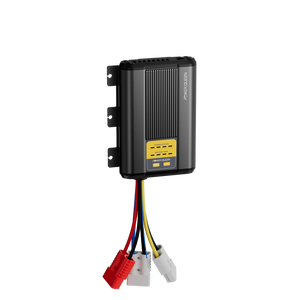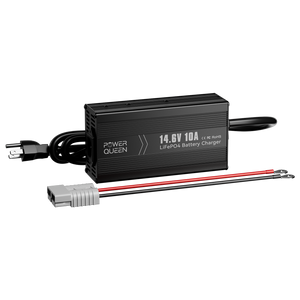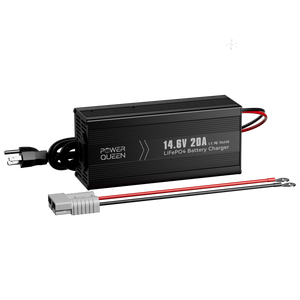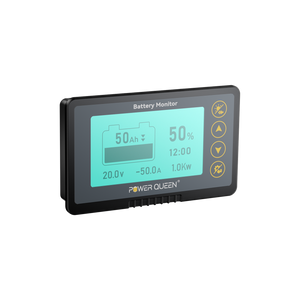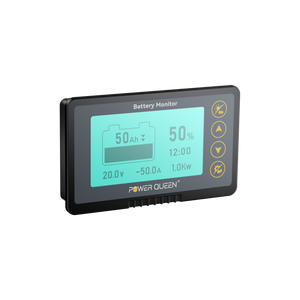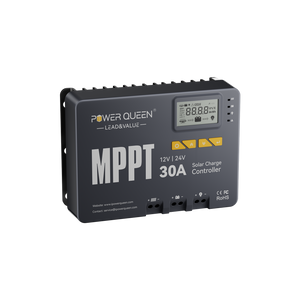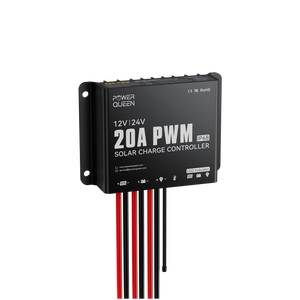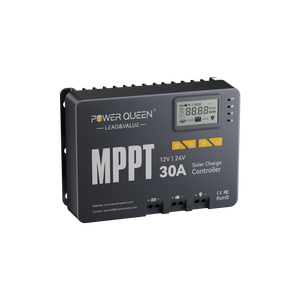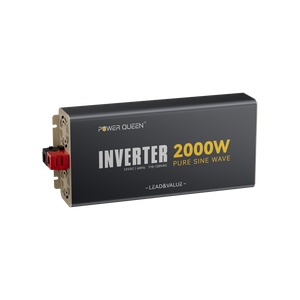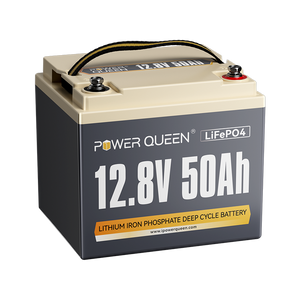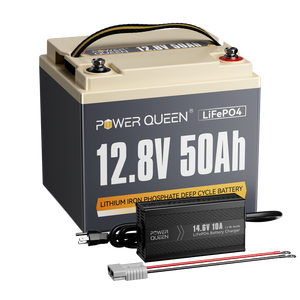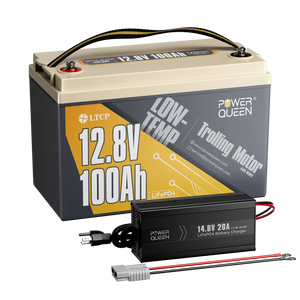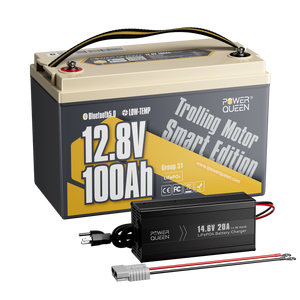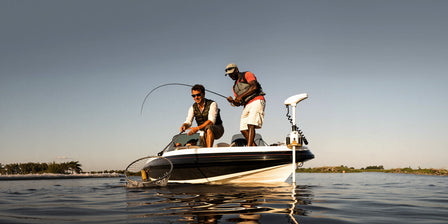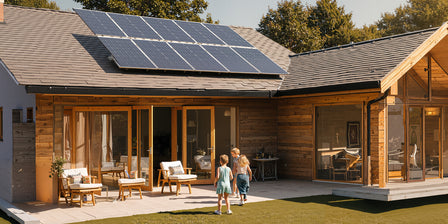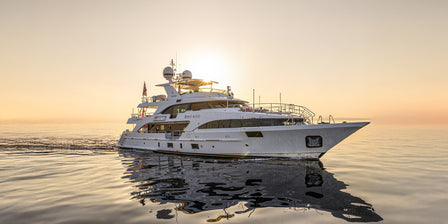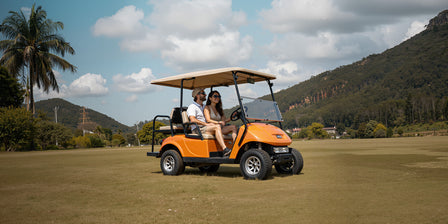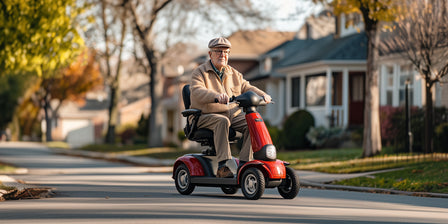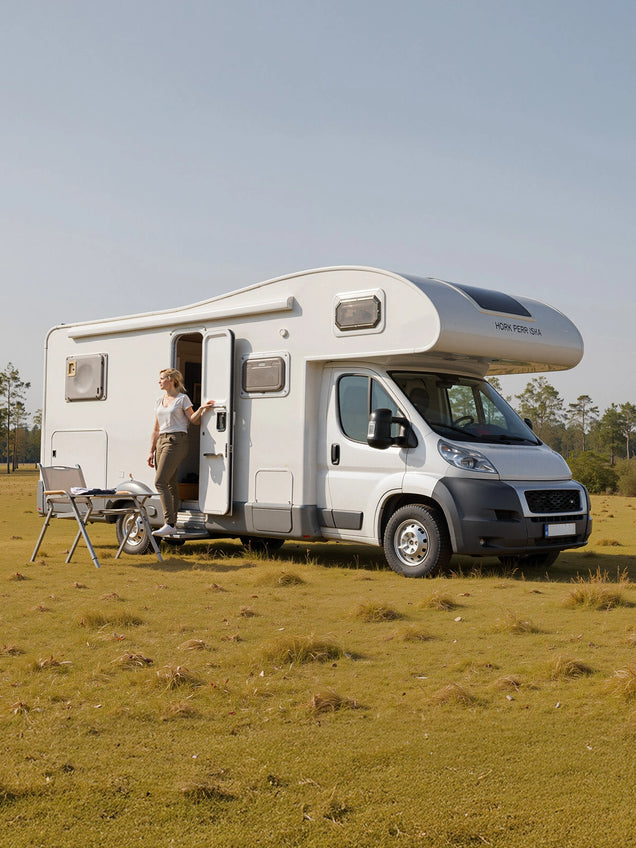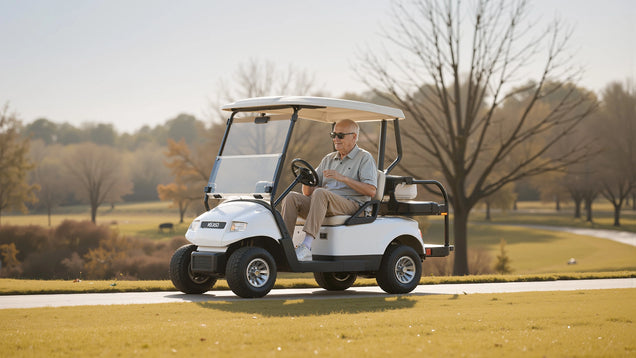What Size Trolling Motor Do I Need [Type & Size]
Choosing the right battery size for your trolling motor is essential to enhance performance and efficiency during your boating trips. In this comprehensive guide, we will explore all the factors you need to consider to find the perfect battery size that meets your unique boating requirements.
Table of Content
- Part 1. Understanding Trolling Motor Batteries
- Part 2. What Size Battery is Suitable for Trolling?
- Part 3. Battery Maintenance and Care Tips
- Part 4. Choosing The Right LiFePO4 Battery for Your Trolling Motor
- Part 5. Conclusion
Part 1. Understanding Trolling Motor Batteries
1.1 Types of Trolling Motor Batteries
Trolling motor batteries are crucial for the efficient functioning of electric trolling motors, providing the necessary power to move the boat. The type of battery you choose can have a substantial impact on your boating experience.
Typically, trolling motor batteries come in three main varieties: lead-acid batteries, AGM batteries, and lithium-ion (LiFePO4) batteries. Below, we will explore the specific benefits and drawbacks of each type in detail.
1.1.1 Lead-Acid Wet Batteries
The most common type of battery used for trolling motors is the lead-acid wet cell battery. Similar to car batteries, these have been a mainstay in the market for a long time. While some lead-acid wet cell batteries are designed specifically for deep cycle marine use, they are not significantly different from standard car batteries. Although widely available, they are considered technologically outdated, with more advanced options now on the market.
Choosing a lead-acid wet cell battery for your trolling motor requires careful consideration and specific precautions before purchase and installation. The installation process should be handled with care and followed in the correct sequence.
A major concern with lead-acid wet cell batteries is the risk of acid spillage during the process of filling with distilled water, which can pose potential hazards to you, your boat, and the environment. While these batteries are cost-effective and functional, their use is generally discouraged, especially for marine applications, due to safety concerns.
Advantages of Lead Acid Wet Batteries:
- Affordable
- Widely available
- Easy to find replacement parts
- Can handle shallow discharges
Disadvantages:
- Require regular maintenance, such as filling with distilled water and cleaning terminals
- Shorter lifespan compared to other battery types
- Heavy and bulky
1.1.2 AGM Batteries
AGM batteries have become the go-to choice for marine applications due to their unique design and enhanced safety features. Unlike traditional lead-acid batteries, AGM batteries are completely sealed and spill-proof.
The key difference lies in their internal structure. While lead-acid batteries use hydrochloric acid and lead plates, AGM batteries employ absorbent glass mats and a gel-like substance to facilitate the chemical reactions necessary for storing electrical energy. This design not only improves performance but also eliminates the risk of leakage, making them a reliable option for various uses, including bass fishing in wet environments.
The sealed nature of AGM batteries is crucial for maintaining their longevity and ensuring safe operation. In contrast, even a slight loosening of a cell cap in a lead-acid battery can cause leakage. This potential issue does not exist with AGM batteries, making them a preferred choice for those seeking a dependable and low-maintenance power source.
Advantages:
- Longer lifespan compared to traditional lead-acid batteries
- Virtually maintenance-free
- More resistant to vibration and shock
- Can handle deep discharges
Disadvantages:
- More expensive than traditional lead-acid batteries
- Still heavy
1.1.3 Lithium Batteries
Lithium batteries are renowned for their exceptional power and remarkably light weight. One of their key advantages is their stable power discharge curve, which ensures consistent peak performance until the battery is fully depleted. For example, while a typical 12V 100Ah lead-acid battery weighs between 60-70 pounds, the Power Queen 12V 100Ah LiFePO4 lithium trolling motor battery weighs only 22lbs. It also features integrated low-temperature protection.
![⚡[Final $189]⚡Power Queen 12V 100Ah Low-Temp Deep Cycle Lithium Battery](//ipowerqueen.com/cdn/shop/files/100tm.png?crop=center&format=webp&v=1758323394&width=400)
![⚡[Final $189]⚡Power Queen 12V 100Ah Low-Temp Deep Cycle Lithium Battery](http://ipowerqueen.com/cdn/shop/files/100tm.png?crop=center&format=webp&v=1758323394&width=400)
In comparison to traditional batteries, which can weigh around 60 pounds and take up a significant amount of space, lithium batteries are compact and can easily fit into confined compartments. They are available in various sizes and amp-hour ratings, allowing boat owners to choose the best battery for their specific needs.
For kayak fishing enthusiasts, a lithium battery is highly recommended. Their compact size and light weight have minimal impact on the kayak's performance. While they may come with a higher price tag, lithium batteries are widely considered the best choice for most kayak setups. In fact, many top trolling motors for kayaks now come equipped with lithium batteries.
Despite their higher cost, lithium batteries are increasingly popular for trolling motor applications.
Advantages:
- Longer lifespan in contrast to traditional lead-acid batteries.
- Lightweight and compact
- Maintenance-free
- Can handle deep discharges
Disadvantages:
- Expensive
- Requires specialized charging equipment
- May not be compatible with all trolling motors on the market
In conclusion, selecting the appropriate trolling motor battery involves considering several factors such as cost, lifespan, and maintenance requirements. Lead-acid batteries are budget-friendly but require regular maintenance. AGM batteries, though more expensive, offer a longer lifespan. Lithium-ion batteries are the most advanced option, providing superior performance at a higher price point. By understanding the benefits and drawbacks of each battery type, you can make an informed choice when picking the ideal trolling motor battery for your needs.
1.2 Factors to consider when choosing a trolling motor battery
When selecting a trolling motor battery, it's important to consider several key factors beyond just the types of battery. One crucial aspect is battery capacity, measured in ampere-hours (Ah), which indicates the amount of energy the battery can store and provide to the motor. Higher capacity batteries offer longer run times but are typically heavier and more expensive.
Another important consideration is the battery voltage, which must match the power requirements of your trolling motor. Most trolling motors use either 12-volt or 24-volt batteries, depending on their power needs. Using the wrong voltage can damage the motor or reduce its efficiency.
For trolling motors with up to 55 pounds of thrust, a single 12V battery is sufficient. Motors that produce up to 80 pounds of thrust require two 12V batteries connected in series to provide 24 volts. The most powerful trolling motors, which generate over 80 pounds of thrust, typically need three 12V batteries wired in series to achieve 36 volts. For more details, consider learning about configuring LiFePO4 lithium batteries in series and parallel to optimize your setup.
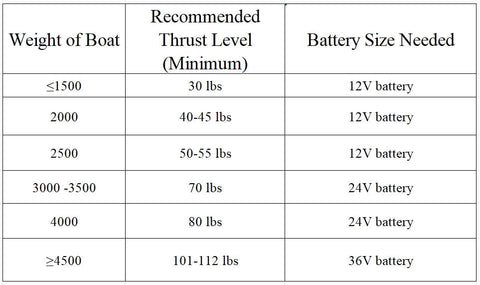
It's also essential to note that some trolling motors are specifically designed to work with particular types of batteries. Therefore, always consult the manufacturer's recommendations before purchasing a battery to ensure compatibility.
Maintenance is crucial for all battery types. Lead-acid batteries require regular maintenance, such as checking fluid levels and cleaning terminals, to maximize their performance and lifespan. AGM batteries need less frequent maintenance but should still be checked periodically for charging and storage conditions. Lithium-ion batteries require minimal upkeep but must be charged with a compatible charger to avoid damage.
Choosing the right battery for your trolling motor depends on your specific needs and budget. Consider factors such as capacity, voltage, and compatibility with your motor, and weigh the pros and cons of each battery type. Regular maintenance can significantly extend your battery's lifespan and ensure optimal performance.
Part 2. What Size Battery is Suitable for Trolling?
2.1 How Does a Battery Size Affect a Boat’s Performance
Choosing the right battery size for your boat is crucial for ensuring optimal performance and safety on the water. The size of the battery significantly impacts the boat's electrical system, engine efficiency, fuel consumption, and overall stability. Using an incorrectly sized battery can strain the engine, leading to higher fuel consumption, and can cause damage to the boat's electrical components. This might result in appliance malfunctions and potential hazards such as fluid leaks, sparks, and overheating.
Both oversized and undersized batteries can negatively affect the boat's performance and the battery's lifespan. Oversized batteries can place unnecessary strain on the electrical system, potentially causing damage and reducing efficiency. On the other hand, undersized batteries may not provide sufficient power for the boat's electrical needs, leading to shorter run times or total power loss.
It's essential to consult experts or the boat manufacturer to determine the appropriate battery size for your specific boat model. Consider factors such as the power requirements of your electrical systems, desired run time, weight distribution, and budget when choosing a battery size. By taking these factors into account, you can ensure that your boat operates efficiently and safely.
2.2 Factors to consider when choosing the right battery size
- Boat Size and Weight: The dimensions and weight of the boat are crucial in determining the appropriate battery size for a trolling motor. Larger boats require batteries with higher amp-hour (Ah) ratings to provide enough power for extended periods of use.
- Trolling Motor Thrust: The thrust rating of the trolling motor is another key factor in deciding the necessary battery size. Motors with higher thrust require more power, which in turn demands a battery with a larger capacity to adequately meet the motor's power needs.
- Fishing Conditions: Environmental factors, such as wind strength and water currents, can significantly affect the power demands of a trolling motor. In conditions with strong winds or currents, a higher power output is necessary, thus requiring a larger battery size to handle these increased power needs effectively.
2.3 Battery Size for Trolling Motor
The most common battery group sizes for trolling motors are 24, 27, and 31. However, selecting the right size depends on factors such as your boat's dimensions, cargo weight, and the power requirements of the motor.
For smaller boats with lighter loads and less powerful motors, a group 24 battery may be suitable. Group 24 batteries typically measure around 10 x 6.88 x 9.94 inches and have a capacity of approximately 70-85 Ah. However, the Power Queen group 24 LiFePO4 battery offers a capacity of 100Ah.

For larger boats carrying heavier loads and equipped with more powerful motors, a group 27 or 31 battery may be necessary. Group 27 batteries are usually about 12 x 6.75 x 8.88 inches in size and provide a capacity of around 90-105 Ah. Meanwhile, group 31 batteries are larger, with dimensions typically around 13 x 6.81 x 9.44 inches and a capacity ranging from 100-125 Ah. Below is the BCI battery size format for reference.
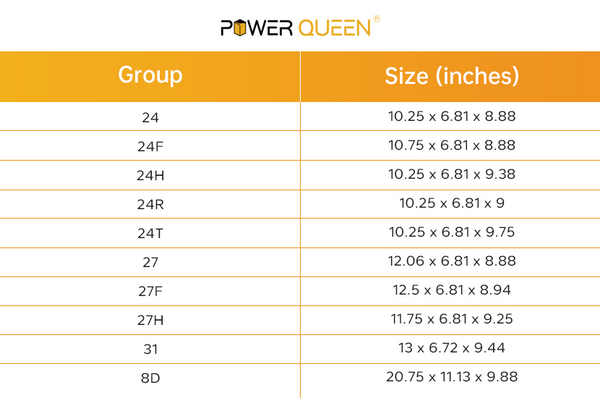
2.4 Advantages and disadvantages of using larger or smaller batteries
Choosing a larger battery undeniably provides more power and longer run times for the trolling motor. However, the downside is the increased weight and bulkiness of larger batteries, which can potentially impact the overall performance and maneuverability of the boat.
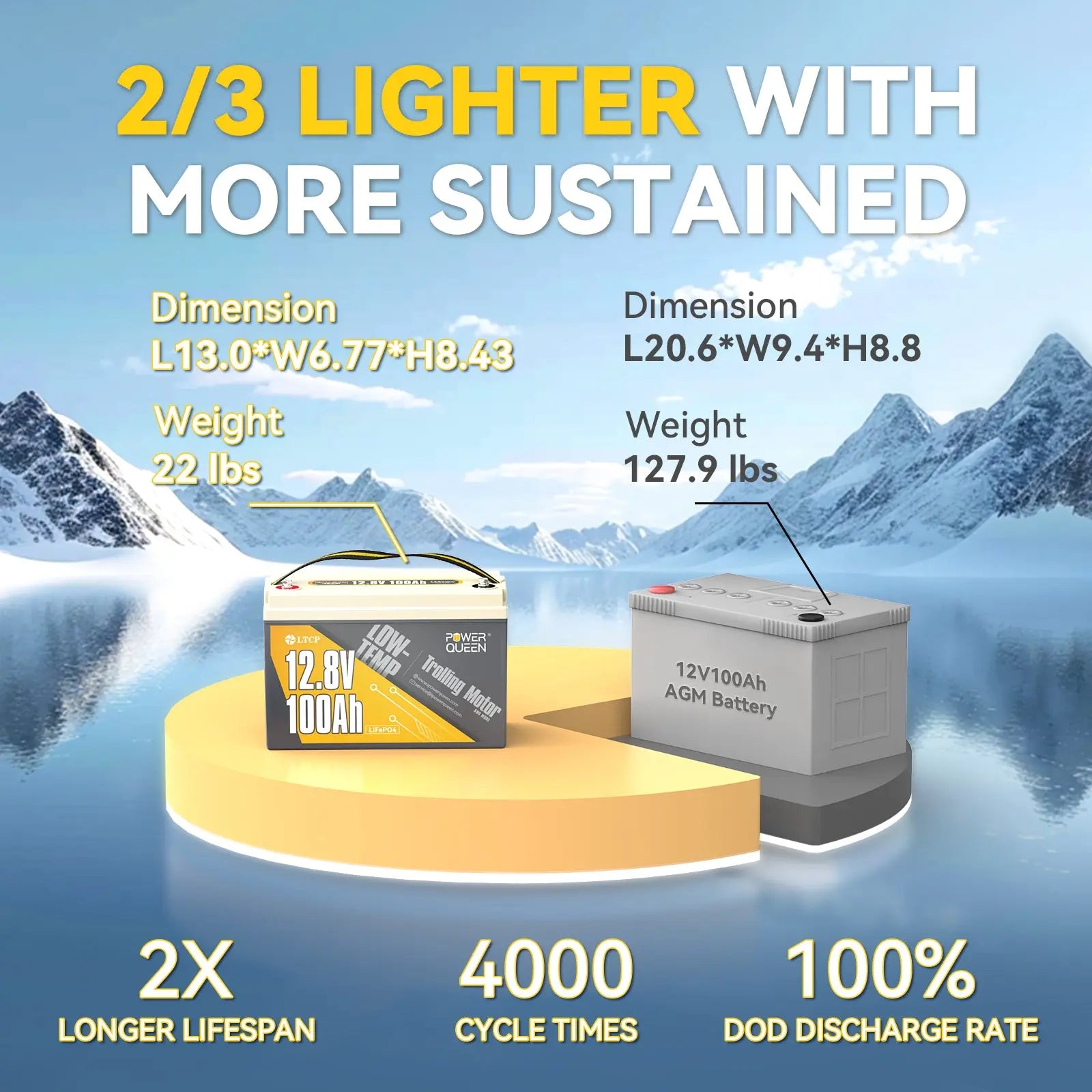
On the other hand, smaller batteries are lighter and easier to handle, but they may lack sufficient power for extended use. Therefore, it's crucial to strike a careful balance between battery size and the boat's weight, thrust capacity, and prevailing fishing conditions to ensure optimal performance.
Thus, finding a battery that achieves the perfect balance between size and performance, taking into account factors such as boat weight, thrust capacity, and fishing conditions, becomes essential. Upgrading to a LiFePO4 battery presents a solution, as it is renowned for its high energy density and lighter weight, offering an optimal balance of power and maneuverability.
Part 3. Battery Maintenance and Care Tips
Ensuring the peak performance, longevity, and safety of your electric trolling motor system hinges on prioritizing the maintenance and care of your trolling motor batteries. Here are some tips and guidelines to help you in this effort:
3.1 Charging Techniques:
It's essential to use a charger specifically designed for your battery type to ensure optimal performance and prevent potential damage. Make sure the charger matches the voltage of your battery. If you're unsure, consult the table below for guidance. Avoid overcharging, as it can shorten the battery's lifespan or cause damage. Charge the battery after each use and avoid leaving it in a discharged state for extended periods. Can a LiFePO4 battery be charged using a lead acid charger? Keep reading to find out!

3.2 Battery Storage Tips
Ensuring the correct storage of your battery is crucial for preserving its lifespan and performance. Store the battery in a cool, dry place, away from direct sunlight and extreme temperatures.
Furthermore, it's recommended to disconnect the battery from the trolling motor before storage. For flooded lead-acid batteries, ensure the water levels are maintained appropriately. If storing the battery for an extended period, fully charge it beforehand and periodically recharge it.
3.3 Signs of a Failing Battery
Remaining vigilant for signs of a failing battery is essential to avoid safety hazards and maintain optimal performance. These indicators may include difficulties in starting the trolling motor, reduced power output, slow or incomplete charging, swelling or distortion of the battery casing, and leaks or corrosion near the terminals. If any of these signs appear, it could signal the need for battery replacement or require professional assistance.
Part 4. Choosing The Right LiFePO4 Battery for Your Trolling Motor
| Voltage of Motor | Motor Thrust | Recommended Max Amp of Batteries | Recommended Power Queen LiFePO4 Batteries | Recommended Reasons |
|---|---|---|---|---|
| 12V | 20 ~ 30 lb | 50A | Power Queen 12V 50Ah Lithium Battery | Cost-effective |
| 12V | 30 ~ 70 lb | 100A | Power Queen 12V 100Ah Lithium Battery | Cost-effective, Low-temp, Lighter |
| 24V | 70 ~ 100 lb | 100A | Power Queen 24V 100Ah Lithium Battery | Cost-effective |
| 36V | 100 ~ 120 lb | 100A | 3* Power Queen 12V 100Ah Lithium Battery | 3 batteries in series |
Here is a condensed table showcasing the suggested Power Queen LiFePO4 lithium batteries, arranged by motor voltage, motor thrust, and the maximum advised amperage of the batteries. Each recommendation is accompanied by detailed justifications. Explore Power Queen Trolling Motor Batteries to find and pick your perfect battery.
Part 5. Conclusion
In conclusion, selecting the right battery size for your trolling motor is crucial for achieving peak performance and durability. Using an improperly sized battery can lead to reduced power output, shortened battery lifespan, and potential safety hazards. Therefore, it's essential to consider factors such as motor thrust, boat weight, and usage patterns to determine the ideal battery size.
As discussed earlier, the best approach to selecting the correct battery size is to follow the manufacturer's recommendations or consult with an experienced expert. Additionally, it's vital to maintain and care for your battery diligently by following the charging, storage, and maintenance guidelines provided.
By giving careful consideration to battery selection and proper maintenance, you can improve the efficiency and reliability of your trolling motor system. Therefore, don't overlook this critical aspect of your boating experience and choose the right battery today! Learn more about experiencing the power of LiFePO4 and share a 4% discount link with your friends and family from Power Queen.
